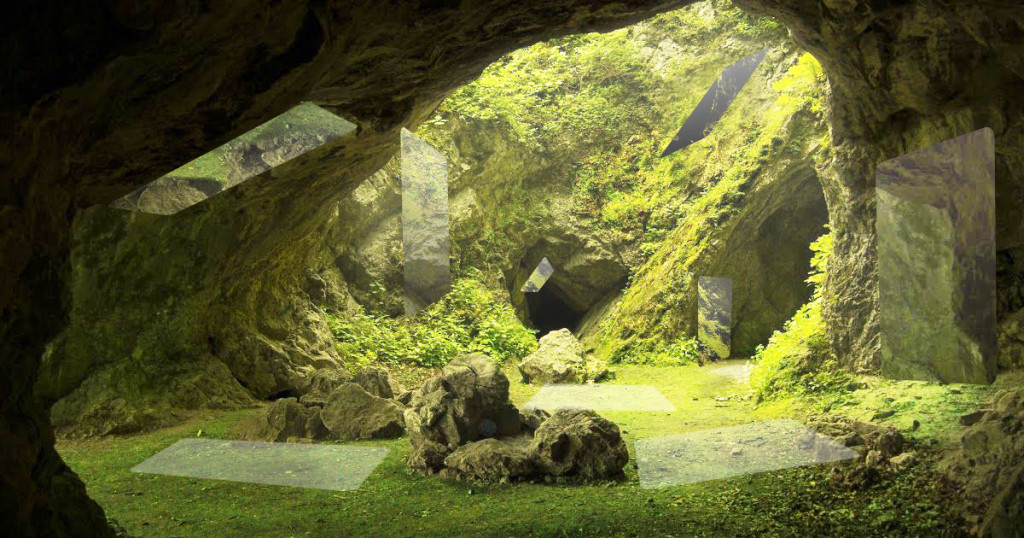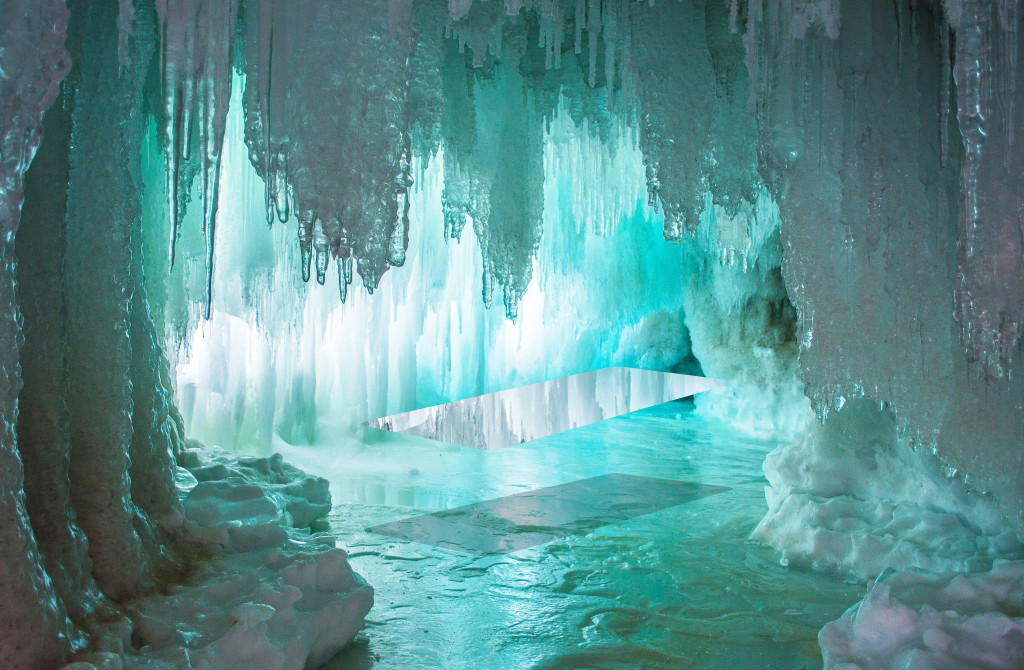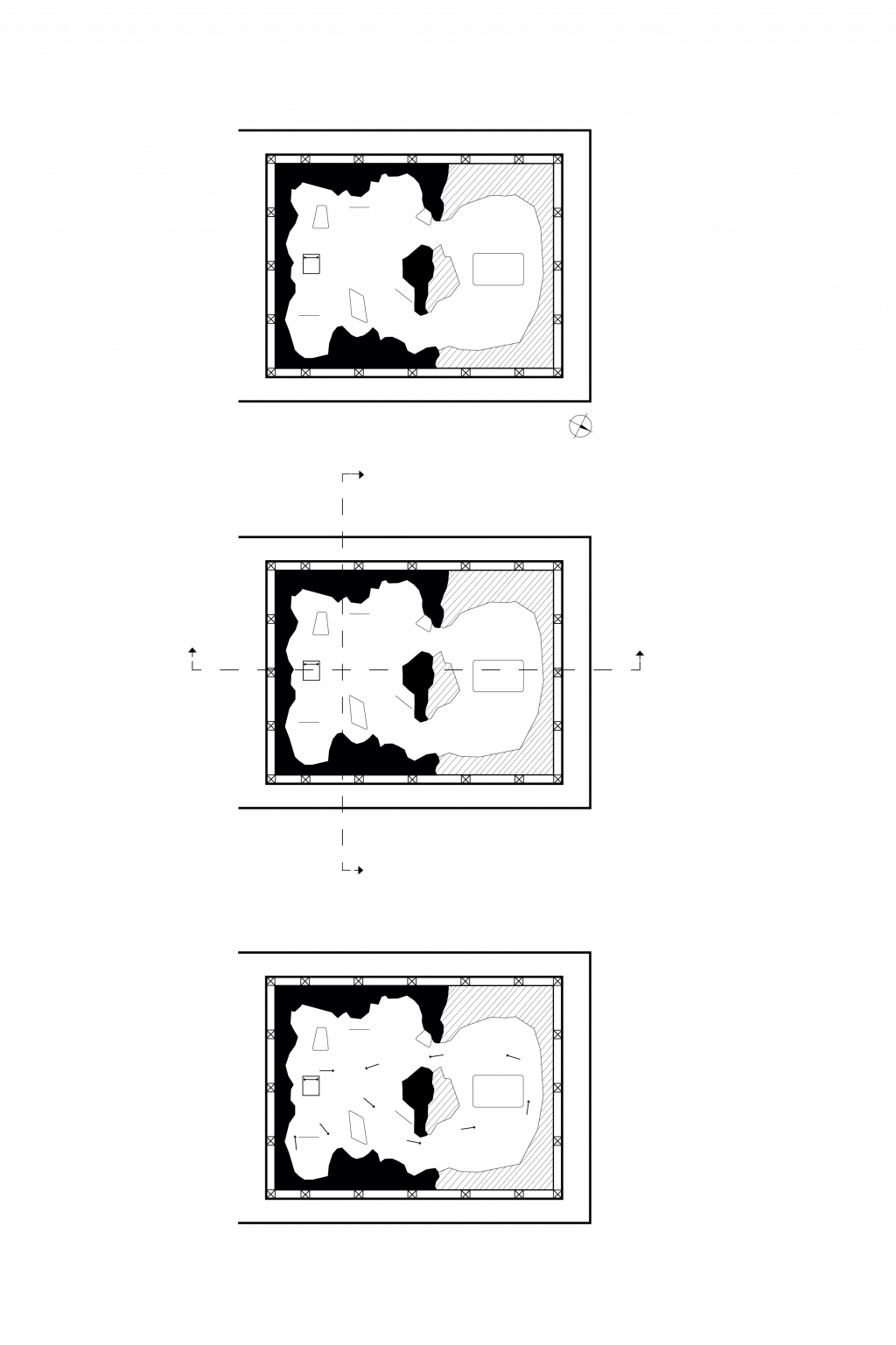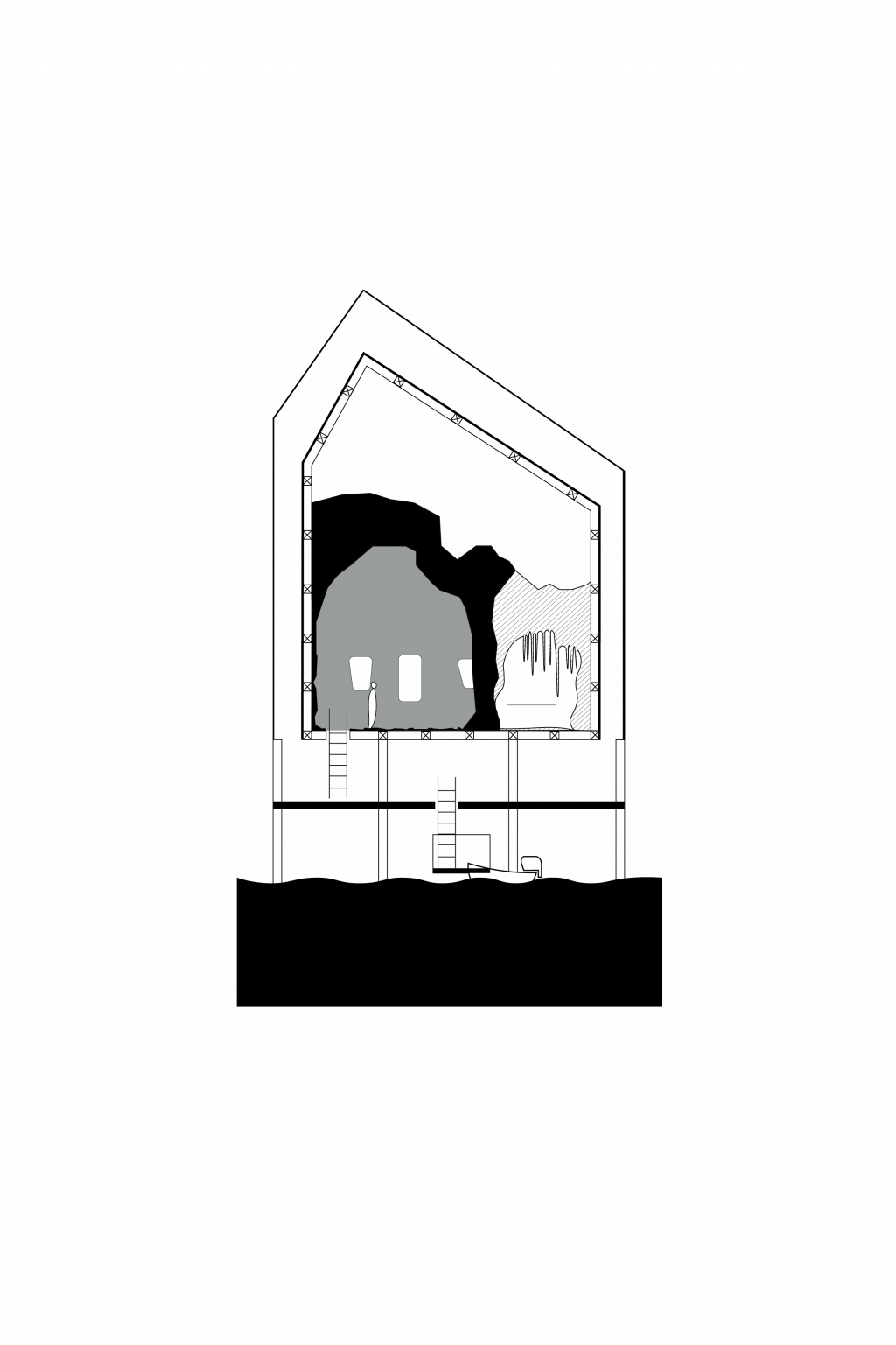Refugium
BA Art Studio
2022
semester

Refugium is a digital art gallery, inspired by the novel Where the Crawdads sing by Delia Owens. The Owens’ novel, is about a young girl growing up in the marshlands. Surrounded by nature, she explores different ways nature interacts and due to lacking contact to other human beings she adapts to this way of communication. Kya starts discovering herself through her surroundings. The quote, also used as the curator’s text: „Nature had nurtured, tutored, and protected her when no one else would! explains the intention of the Refugium. The gallery adopts this exact feeling. Nature functions as a refuge, but also as a place to adapt to and be aware of. The Refugium is located in a swampy area and can only be reached by boat, which is reminiscent of the location in the novel. By placing mirrors on the outside of the façade, the gallery merges with its surroundings. A modern building that flows in unity with nature through the reflections. It enforces a sense of presence. The exhibition encourages self-reflection in different climatic spaces and enables different perspectives of self-perception. Visitors climb into a moss cave that has no windows and is lit by an invisible simulated sun that can change to present the interior in different light. By entering into the Refugium head first, one automatically has to overcome the fear of entering the unknown. Through the different light settings, the gallery can be explored differently with every visit. The building itself plays a role in the exhibition and allows the visitor to participate. Artwork and visitor are pushed to follow the natural curves and structures. The moss cave leads through two entrances to a smaller ice cave. A small entrance through which the visitor can crawl and a larger one through which it is easier to enter. Moss and ice contradict each other in a sense, the way the mirrors contradict the interior, but also take part in it. Both are defined by water in an individual way and each cave with each texture conveys a sense of protection. Moss is one of the largest producers of oxygen, while ice not only represents water but, as it becomes increasingly rare on Earth, also raises awareness of climate change. The exhibition itself contains mirrors as well, not only reflecting the visitor in different perspective, but also reflecting the caves, lighting and the other mirrors making it an exhibition of self and outer reflection. Next to the natural structures in both of the caves, the mirrors add an additional contradiction, to a world where there are no completely straight lines.




